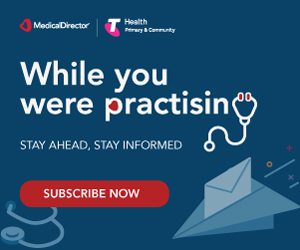Why cloud software is the future of healthcare
Why cloud software is the future of healthcare
Today’s healthcare industry demands technology that not only supports a busy practice through challenging times, but helps it to thrive. In this article, we break down how cloud software meets the needs of a modern healthcare practice, now and into the future.
The past two years will be seen as pivotal in the healthcare industry, as unprecedented demand continues to put pressure on all healthcare providers. Hospitals and practices have had little choice but to transform the way they deliver patient care, and do it fast.
Practitioners who were already using cloud clinical software in their practice were able to adapt to many of the changes with relative ease. That’s because cloud software – which delivers your IT over the internet rather than via a physical server – is better equipped to support modern healthcare than traditional on-premise software. Here’s why:
Interoperability between systems and devices
When patient information is stored in the cloud, it means it can be easily shared between connected systems and medical devices securely, creating true interoperability. For example, patient records could be instantly updated with vaccine details from a pop-up clinic, test results could be shared easily with specialists, and different departments could collaborate on a patient’s care plan more effectively. Greater interoperability means that healthcare providers have immediate access to up-to-date and comprehensive information about the patient, streamlining backend administrative processes and providing a better patient experience overall.
Better data storage and security
Patient data that’s stored on a physical server inside a clinic has greater risk of being compromised by hackers, or even lost in the event of an emergency such as a fire or flood. When patient information is accessed without authorisation or lost, it can compromise the safety of your patients and result in legal, financial and reputational consequences. To mitigate this risk, cloud software providers use state-of-the-art remote servers to store and back up your patient data, which is also secured with strict role-based access. Keeping your data safe and secure is a priority for cloud software providers, with security specialists constantly monitoring for cyber threats and updating the software with security fixes when required.
More flexibility for patient and practitioner
These days, an optimal patient-centred care experience offers patients more flexibility when it comes to how and where they receive healthcare. Cloud-based telehealth appointments, which provide patients with a voice or video consultation, means they are no longer required to travel to the clinic during set opening hours. This frees up the patient – and practitioner – to arrange consultations at a time and location that may be more suitable, such as after hours at their home. In addition, because cloud software can be access from any internet-enabled device, your team is able to work from different locations and outside of traditional clinic hours, enabling your practice to truly embrace flexibility.
Cost effective and scalable
Purchasing software licenses and maintaining the physical servers that traditional software requires can be expensive. With cloud software, you are effectively ‘renting’ rather than ‘purchasing’ your software, so new users can be added more cost-effectively as part of your software subscription. That means that cloud software is better able to support a growing practice as it gives you the ability to increase (or decrease) your IT resources as your needs change – without the need to buy more equipment. New users simply need their own login details and an internet connection. You’ll also save money on IT support as it’s the responsibility of the software provider to ensure your software is up-to-date and working as it should.
Designed to enhance user experience
Being relatively new to market, there is often a greater focus on design when it comes to cloud software. With decades of user experience data about what works and what doesn’t to draw from, many traditional pain points simply don’t exist in cloud software. For example, MedicalDirector Helix has been designed so that practitioners can run through their workflows quickly and easily. Load times are faster, and there are also fewer screens to click through. Patient notes, pathology, prescriptions and referrals can all be viewed side by side without having to open multiple windows. This focus on making the software fast and easy to use can really make a difference when it comes to how much time you’re spending in front of the computer.
Automatic updates keep you compliant
Keeping your clinical software up-to-date has always been important, but with the frequency of recent changes, it can be overwhelming to try and stay on top of them. ePrescribing, Active Ingredient Prescribing, Medicare Web Services and new drugs are all changes that needed to be incorporated into your clinical software so that your practice remains compliant. But thanks to the cloud, you no longer need to worry about organising manual software updates and upgrades yourself. The cloud software provider manages them for you, deploying new features and functionality remotely to the software at the appropriate time. In many cases, you won’t even be aware of the updates taking place. You’ll just see the changes when you next log in to the software.
Cloud software offers more flexibility and interoperability, better data storage and security, and greater efficiencies for practitioners and patients. It really is the future of healthcare, and one of the easiest ways to future-proof your practice and stay compliant. If you’d like to learn more about MedicalDirector’s cloud software solutions, chat to our team today.









